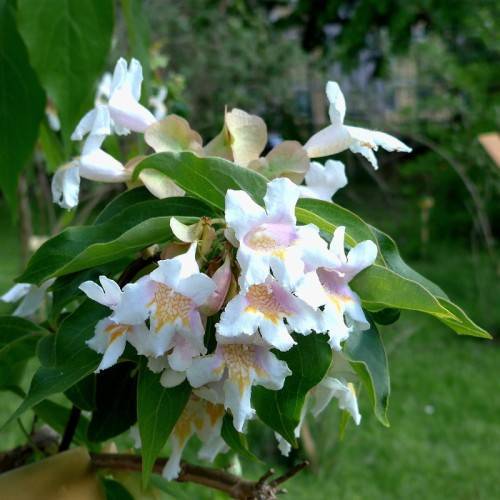
rosy dipelta
Dipelta floribunda
Cycle:
Perennial
Watering:
Average
Hardiness Zone:
5 - 7
Flowers:
Flowers
Sun:
Full sun,part shade
Leaf:
Yes
Growth Rate:
Low
Maintenance:
Moderate
Drought Tolerant:
Yes
Salt Tolerant:
Yes
Care Level:
Medium
watering
Watering for rosy dipelta will depend on the climate conditions in your area. It prefers moist soil, so during the warmer months when the temperature is consistently above 70°F (21°C), it is important to keep the soil moist but not waterlogged by watering it every couple of days. Depending on the climate conditions, you may need to water even more often during the hottest periods. On the other hand, during the colder months when the temperature is below 60°F (16°C), water the plant only when the soil is dry, usually every 10 days to 2 weeks. It is important to ensure that the pot has a drainage hole at the bottom to prevent its roots from sitting in water. Furthermore, use lukewarm water, as cold water can shock the delicate plant. When watering, soak the soil until water starts to run from the bottom of the pot. Once you have finished, allow the excess water to drain away, and empty the saucer to prevent root rot.
sunlight
Rosy Dipelta (Dipelta floribunda) requires full sun for optimal growth. This plant should receive at least 7 to 8 hours of direct sunlight a day. If possible, more than 8 hours of sunlight would be beneficial for this species. Optimal light conditions for Rosy Dipelta would be during the morning hours so that the plant has time to absorb the energy needed to thrive.
pruning
Rosy Dipelta should be pruned annually, just after flowering in early to mid-spring. This perennials pruning should involve removing weak, dead, and damaged branches. Additionally, the central stems that have grown over the desired shape of the plant should be thinned out. Cutting stems at a 45 degree angle will further help the plant keep its shape. Pruning should be done sparingly in order to maintain the natural form of the Rosy Dipelta. Approximately 1/3 of the longest stems should be removed each spring.
